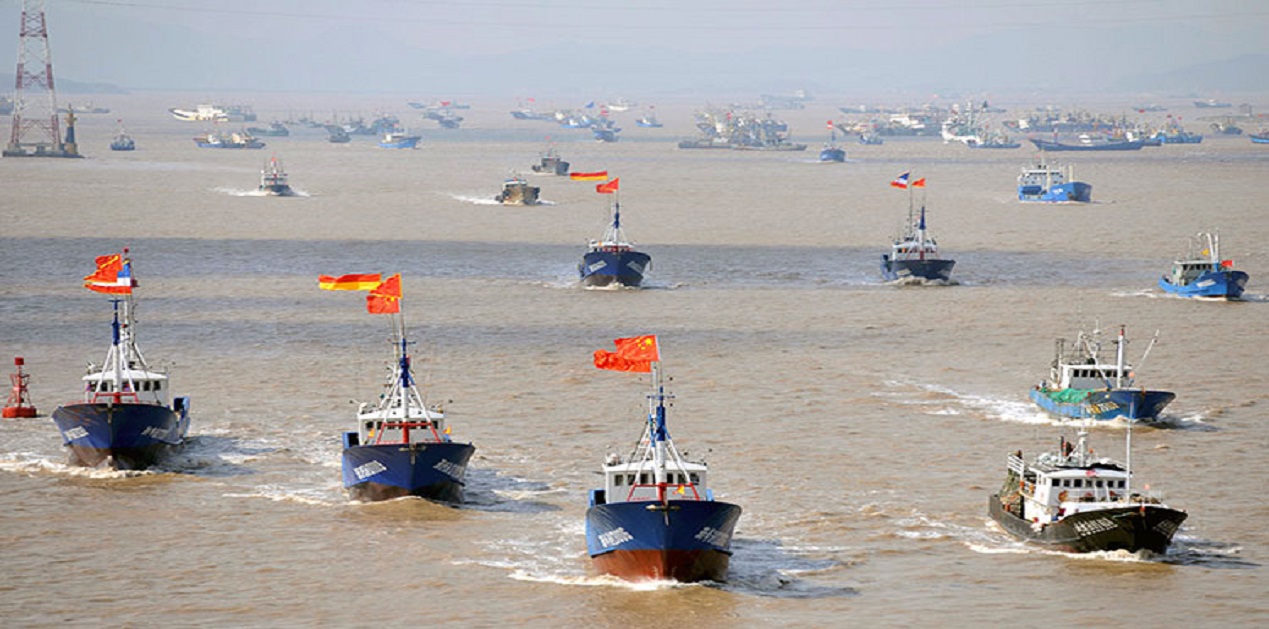Since more than the past 18 months Chinese President Xi Jinping and the Chinese Communist Party (CCP) have been under increasing pressure because of the US-China Tariff war. Washington has also been trying to create an adverse international environment for China as evidenced by the push-back against the Belt and Road Initiative (BRI) – a major initiative personally backed by Xi Jinping – and efforts by the China’s Huawei to unroll 5G its network in Europe and elsewhere. The recent troubles in Hongkong, blamed by the official Chinese media as the handiwork of hostile foreign forces, are additionally problematic.
Domestically too, the cost of living is rising and China’s economy has been slowing thereby contributing to increased unemployment and sparking worker unrest. There is dissatisfaction among academics and students who, since the National People’s Congress (NPC) session in March 2019, have at assured personal risk spoken out publicly against Xi Jinping’s policies. So have, quite unusually, former senior Party cadres, a couple of members of the Chinese People’s Political Consultative Conference (CPPCC) and a few ‘princelings’, suggesting that cohesiveness in the upper echelons of the Party leadership is fragile. Despite this, Xi Jinping has not modulated either the increasingly stringent domestic policies or his assertive and, at times aggressive, foreign policy.
Recent events illustrate that China will continue to follow its assertive policies. The South China Sea, of which China claims over three million square kilometers, remains at the centre of China’s efforts. Since Xi Jinping took over as President, China has been aggressively moving to militarise islands and islets in the South China Sea – portions of which are also claimed by six other countries – and establish its claim. In the process China has deployed its military and missiles on seven of them. Notwithstanding Xi Jinping’s commitment in 2015 to not militarize these features, China has persisted in its actions. Revealing in this context are the disclosures recently in two official Chinese publications.
Qiu Shi, the Party’s leading fortnightly theoretical journal, in its April 16, issue published an article authored jointly by Vice Admiral Liu Shijong of the People’s Liberation Army Navy (PLAN) and Vice Admiral Qin Shengxiang, PLAN Political Commissar to mark the 70th founding anniversary of the PLAN. Reviewing the PLAN’s achievements over the years, the article revealed that President Xi Jinping has been promoting the construction projects on certain islands and reefs in the South China Sea ‘with a firm will’, which has ‘changed the strategic situation of military struggle at sea and demonstrated the steadfast determination to fight for every inch of territorial land and waters within China’s sovereignty’. Observing that on April 23, 2018, China unveiled a monument to mark its construction work on Yongshu Reef, Nansha Islands, the article said President Xi Jinping had announced the decision to establish China’s first overseas military base in Djibouti.
The present stand-off between China and Vietnam similarly shows that despite being under pressure China is unwilling to suspend its quest for domination of the South China Sea. While the respective communist parties exchange visits and talk of fraternal ties, tension is high in the waters of the South China Sea where China has questioned Vietnam’s claim. Reports confirm that the Chinese survey ship ‘Haiyang Dizhi 8’ conducted seismic surveys of Vietnam’s exclusive economic zone for ten days from July 12. It was escorted by at least three escort ships including a 12,000-ton China Coast Guard cutter with a helicopter and another 2,200-ton Coast Guard ship. While neither country has officially confirmed the stand-off, in the last few days people on Vietnam’s social media have criticised Vietnamese leaders for being submissive to China.
China has also not stopped pressing its territorial claims with Japan. There have been repeated violations of airspace by the People’s Liberation Army Air Force (PLAAF) aircraft over the Miyako Strait and Bashi Channel. Recently on July 23, two China’s PLAAF Xian H-6K long-range bombers and two Russian Air Force Tupolev Tu-95MS strategic bombers, for the first time ever, flew together over the Dokdo Islet violating South Korea’s Air Defence Identification Zone (ADIZ). Interestingly, the Dokdo Islet, called Takeshima by Japan, is claimed by Russia.
China has at the same time been steadily increasing diplomatic, political and military pressure on Taiwan to accept the ‘1992 consensus’. PLAAF aircraft have overflown the Taiwan Strait and circled around Taiwan while PLAN warships including China’s aircraft carrier have, in a show of strength, sailed through the Taiwan Strait. Between June 29 and July 3, China test-fired a series of DF-21 anti-ship, medium-range ballistic missiles into a 22,000 square kilometre bloc of the South China Sea between the disputed Paracel and Spratly island groups. Beijing seems to have assessed that it has adequate military capability to deter the US from coming to Taiwan’s aid. This calculation has led to instances of brinkmanship by the PLAN against US Navy vessels sailing in the area.
Separately and more recently, China’s Defence White Paper entitled ‘China’s National Defence in the New Era’ and released in the midst of the US-China tension on July 24, 2019, included a candid assertion of future intent. Describing itself as “the only major country yet to be completely reunified, and one of the countries with the most complex peripheral security environment”, it said “China faces serious challenges in safeguarding national sovereignty, territorial integrity, and maritime rights and interests”. The observation that China is “the only major country yet to be completely reunified” clearly hints at the ‘China Dream’ and points to China’s long-term future plans and likely policy on settlement of outstanding border and territorial disputes. This is of direct relevance to India with whom China has territorial disputes as well as China’s other neighbours like Taiwan, Japan and Vietnam.
Intrusions by Chinese armed forces across the Line of Actual Control (LAC) between India and China need to be viewed in this backdrop and, as candidly stated in the White Paper, as part of China’s ambition to “completely” reunify the country. The lengthy confrontation at Doklam is suggested in this White Paper on Defence as yet unfinished business. The recent ‘demonstration’ by Chinese personnel at Demchok in Ladakh coinciding with the Dalai Lama’s birthday on July 6, is similarly deliberate. On this occasion the Chinese action combined the issues of the Dalai Lama with that of the India-China Border for the first time, indicating a shift in Beijing’s policy. It presages potentially increased pressure on India on the issue of the Dalai Lama and the Central Tibetan Administration in the days to come and certainly after the XIVth Dalai Lama is no longer on the scene.
These actions, as well as the rejection of the US-proposed draft agreement carried back to Beijing by Vice Premier Liu He in mid-May, show that Chinese President Xi Jinping and the CCP Central Committee are unwilling to compromise with Washington on issues they consider as affecting national interest. Additionally, Xi Jinping has apparently calculated he will press ahead with his ambition of the ‘reunification’ of China, especially as Beijing perceives that some of the countries who have problems with China are close to the US. China under Xi Jinping has obviously decided to last out the Trump Administration -- though this may entail managing his Administration through another term.
(The author is former Additional Secretary, Cabinet Secretariat, Government of India and is presently President of the Centre for China Analysis and Strategy.)
Image Source: https://www.reuters.com/investigates/china-military/images/part1/china1a.jpg











Post new comment